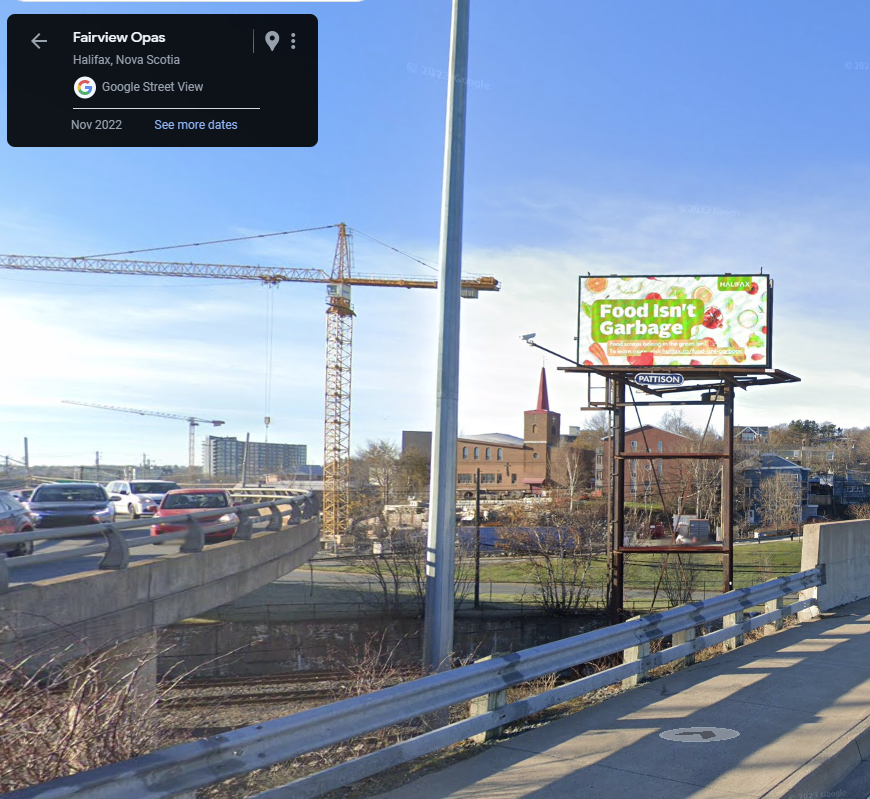Er. Am I the only one to comment that this is a refreshing change to all the displays in shops, airports, etc that show the many ways that Windows errors and BSODs?
Linux on the desktop? Hell no, it’s on 80’ billboards.
(It’s not Arch btw)
Since the Raspberry Pi has been released it’s pretty common.
Running Windows for digital signage always struck me as an absolute waste of computing power. Just shove some low power Linux SBC into it and forget about it for about a decade or so
A lot of the time, the whole company that runs the signage uses Windows, and the signage just uses one of their standard PCs with their standard Windows image. They probably already have a bunch of spares. Makes it easier for IT if they don’t have to support another configuration.
I just said “You know when Linux has taken over the world? When you don’t see blue screens on billboards.”
I mean, we have systemd-bsod now…
Not that I’ve ever seen it of course.
Same here, was at the airport just last week and saw two screens running windows, absolute joke.
deleted by creator
Looks like systemd to me
that is the exact opposite of systemd: sysvinit
you can recognize it by the iconic makefile line in the output, which indicates the setting CONCURRENCY=makefile has been chosen.
Ah, back in the days before Lennart and RHEL killed linux.
Having only run debian for a job interview - where I had to learn systemd and I fucking crushed it, woo - I would never have picked out that makefile line. Kudos.
Having run automation in 2002 based on package triggers, makefile, cron and awk, I completely approve of using makefiles to orchestrate startup. That’s actually genius.
I’m still furious they intentionally broke CentOS. And then had the audacity to emulate SmallFloppy Glasspane and bake some spyware into Fedora.
This is the first I’ve heard about spyware in Fedora. Care to elaborate?
Anonymous data is useless. Most any data can be de-anonymized. And tracking data is always to “improve services” until the companies are offered significant sums for it…
Probably telemetry software. Basically mandated for any publicly traded software company these days.
The thing is that telemetry can be useful… bug reports let the developer know which bugs occur the most, feature logging lets the developer know which features are used the most (and thus what they might want to focus on adding new functionality to), etc. It’s become a dirty word since a lot of companies have telemetry that’s way too intrusive.
Yep! I understand, which is why I was clarifying for the previous commenter. As for if telemetry is morally justified, or if we should go back to old fashioned bug reports and some sort of upload system that requires direct user buy-in as the payment for privacy at the cost of reliability, mobility, and scalability is a discussion for someone else haha.
I love how I compliment someone and get downvotes. Ha ha ha ha.
It booted into a GUI afterwards, and had grub installed.
You would have seen Grub way before this screen.
It did and it went by so fast I couldn’t take a pic.
Maybe he did, and took a picture later.
You time travel like a wizard.
Not necessarily Debian
But systemd for sure!
Hardly the wilds: https://maps.app.goo.gl/Gw2aiyPXBCL8jJhV8
Wow, did the place change in two years. That blue building just SHOT up there.

The blue stuff is insulation/vapor barrier on new construction, so it’s not even completely built yet.
I refuse to believe that Nova Scotia is a real place
It’s in Canada. Which is on Earth! Which is in Canada.
I was gonna say that it looks like every Linux install I’ve ever booted… But then I realized 90% of them have been Debian or Debian-based 😅
Every systemd-based distro should look like that indeed
It looks like my garuda startup
Linux is also used on billboards now? Nice
Always has been
I think I saw Windows on billboards and projectors a few times in my country. Don’t remember seeing Linux much
Maybe because Linux rarely die?
Good point
Always has been
It’s been for a while. It’s cheap and easily-embeddable with a proper network stack for remote management. It’s a decade at least, but I can only gauge since I first saw a net guy in an adjacent desk fighting with a parks n rec guy over one not working.
(it wasn’t DNS: it was fucking radios/wireless)
I wonder if this being a digital billboard is actually cheaper than just hiring some workers to swap out the printed advertisement every, I dunno how often they normally change, week or so?
The benefit is being able to display 3+ different ads on rotation that change every minute or two. That, and labor is cheaper when they’re not 50ft off the ground
The digital ones are also visible at night so the advertiser gets more impressions and the billboard ad company can charge more.
So are the printed ones. They just have flood lights pointing at them.
The digital ones are way more visible though, at least the ones I see here. There’s also some here that are printed but don’t have lights, for whatever reason.
Labour is expensive
I dunno how often they normally change, week or so?
Quick bit of googling suggests printed billboards have a ~$1k startup cost to the advertiser then a flat rate monthly fee, so I’d hazard a guess its probably 3-6 months at a time to amortize the startup cost
I like the security camera pointed at the billboard, like someone’s gonna steal it.
Probably for spray paint or other damage. Or maybe for identifying when it fails
Or maybe for identifying when it fails
That’s it exactly.
no, thats the monitor, how else are you supposed to debug it?
I’m pretty sure that’s just a light
Not much need to light a digital billboard.
Unless this is the world’s most cryptic Debian ad, and that’s actually printed on…
Damn, Linux distros are doing advertising now
looks like it’s starting cron? I’m assuming that’s debian/ubuntu then.
Could be anything else, but if i had to posit a likely guess that would be mine.
the wilds of Nova Scotia
Walking across the Windsor Street exchange is wild for sure.
They have a cross walk now, I feel so safe now.
Nova Scotia is looking a bit ROUGH though.
deleted by creator
We’re all in this together. At least until rent is so high that we just leave lmao
Reminds me of the garbage can that keeps crashing at the Tim Horton’s downtown

That looks like a network issue.
And a storage issue as well maybe
The way I see it, it looks like it can’t write the files because it can’t fetch them from the network. Without a lot dump I may very well be wrong, though.
Guess the screen is too small to see the error on the bottom? Geez, they need a bigger screen?
Why billboard system would have sane installed? I don’t think Debian or derivatives install it by default. Vnstat is also a bit odd, but maybe that’s just me. I assume they have multiple of these displays around and for them it would make more sense to use something more centralized, like zabbix, to monitor the whole network (obviously they could do that too).
assume they have multiple of these displays around and for them it would make more sense to use something more centralized, like zabbix
The one I saw a decade ago yielded SNMP to solarwinds (I know I know) rather well, but they mainly used PING on it to see when the radio link died.
Fancy that – when the parks n rec sites were converted to e-billboards, they had power but no net line, and “radio’s fine”. Show me an old linux billboard host and I’ll show you a canvas my inner child can’t wait to e-graffiti.
Wait a second. They used AMPRNet to manage these things? In here this kind of things are either hardwired to the internet or they use 3/4/5G uplink and while of course techinally possible either way to breach the system it’s a bit more difficult to find out proper IP’s and everything.
Once upon a time I had a task to plan a scalable system to display stuff on billboards and even replace printed ads on stores with monitors. The whole thing fell down as we couldn’t secure a funding for it, but I made a POC setup where individual displays had a linux host running and managing the display with (if memory serves) plain X.org session with mplayer (or something similar, it was about 20 years ago) running on full screen and a torrent network to deliver new content to them with a web-based frontend to manage what’s shown on which site. Back then it would’ve been stupidly expensive to have the hardware and bandwidth on a single point to service potentially few thousand clients, so distributing the load was the sensible solution. I think that even today it would be a neat solution for the task, but no one has put up the money to actually make it happen.













